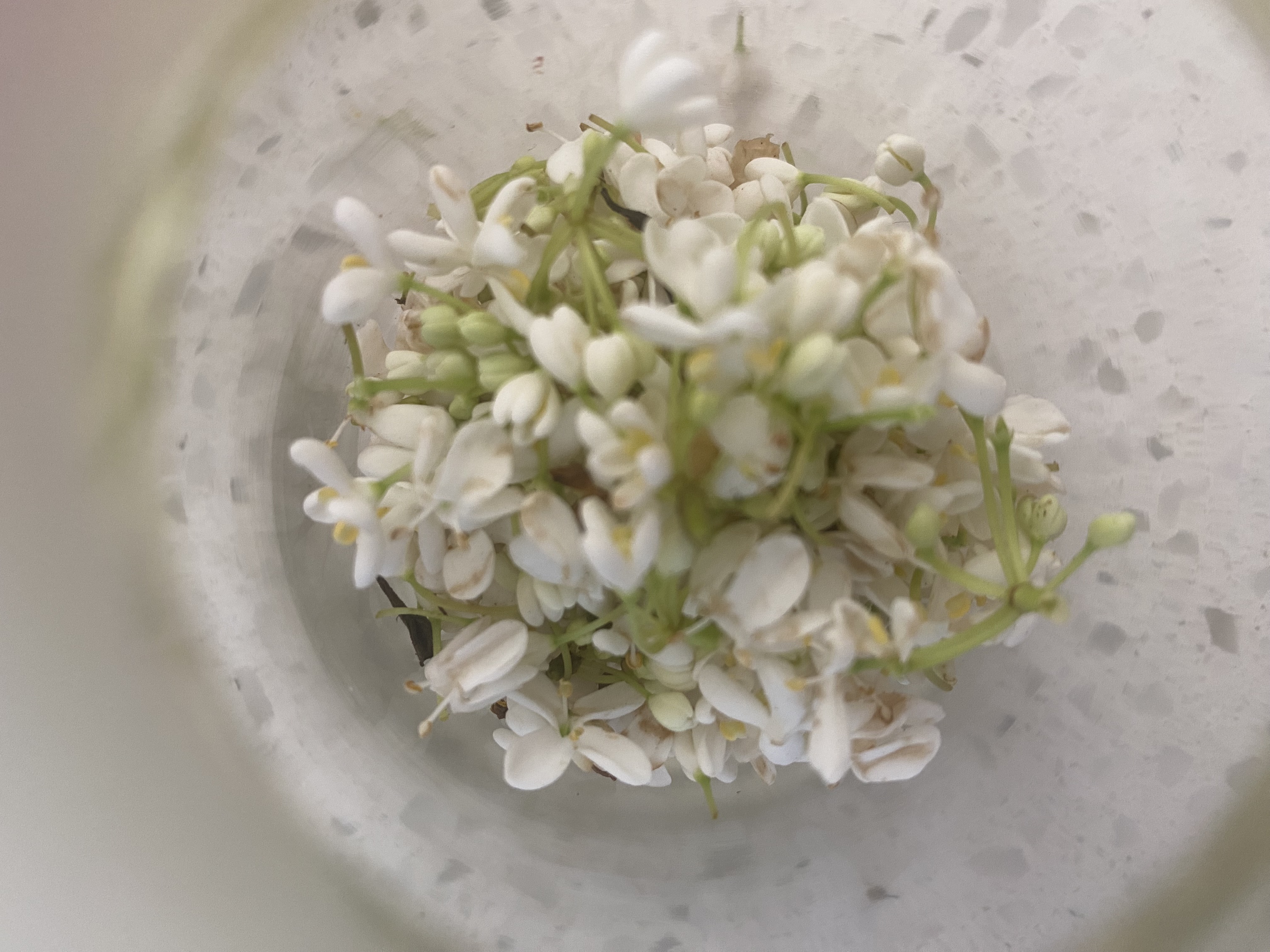Osmanthus Enfleurage
Osmanthus Enfleurage
I have two precious osmanthus (fragrans) trees, now aged 12 years, which I have brought with me each time I have moved house. They flower at the same time, around Easter but only every 3-4 years. Previously I have codistilled the small amount of flowers and I describe this below in the Archived post.
in 2025 I decided to try the long process of genuine enfleurage. This is the ancient process of laying delicate, fragrant blooms in a soft fat on glass plates and replacing often until the fat is fully impregnated with the aroma (creating a pomade). This fat is then washed with a solvent such as pure alcohol to capture the precious aromatics into what is called an absolute. Traditionally tallow ws used as the fat. If you google this process it seems that there are two methods recommended, one a 'hot method', which is actually just a speeded up infusion of flowers into a hot fat. This is not true enfleurage, and the heat would actully damage many of the precious flowers. The other is what I described and more detail can be found here.
My process.
I hand picked the hundreds of tiny white blooms in the early morning when the sun ws out. I then pressed into refined coconut oil on a plastic tray. I explain this more in the following video. I used a fine pair of tweezers for this and replaced the flowers every few days. This photo shows me using the tweezers and pressing the flowers into the soft coconut oil (deodorised).
The flowers were replaced every other day over a timeframe of a couple of weeks. In between they were covered with an airtight silcone seal. The flowers don't go mouldy as no moisture is added and they are fully covered by the oil.

Seperate to the flowers pressed into the coconut oil I made an osmanthus flower tincture, using 99.9% pure grain ethanol, which I purchase from Kaiapoi Distillery. As new flowers came along I added to the ethanol. There were left for about four weeks and the colour of of the tincture became quite dark and highly aromatic.
Once I had run out of fresh flowers I then used the tincture to extract the aromatic enfleurge from the flowers. This involves 'washing' the fat with the tincture and gently heating to remove s much as possible of the remaining alcohol. This mix is then strained and filtered to remove remaining plant material, which is totally spent and discarded back to nature.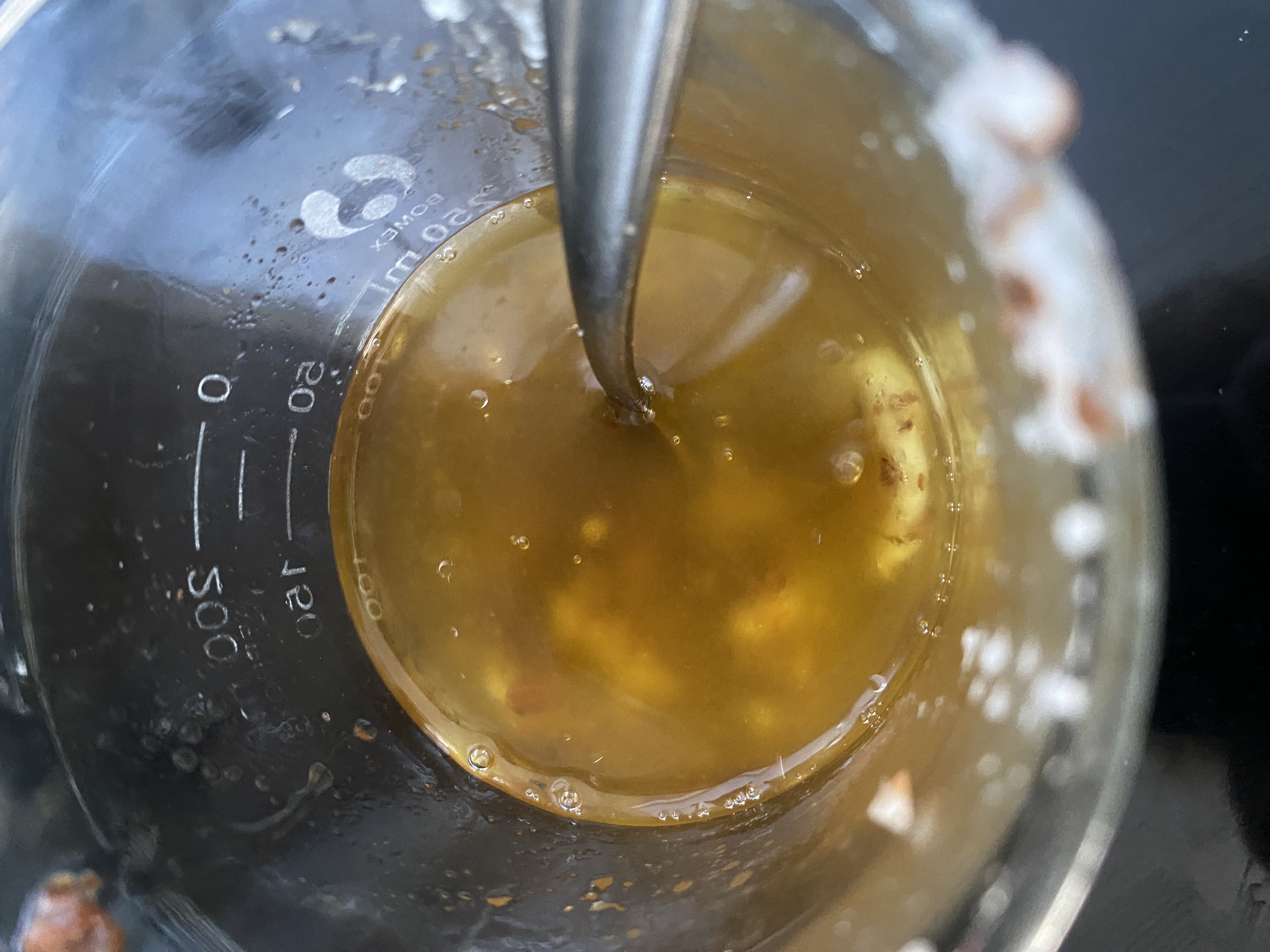
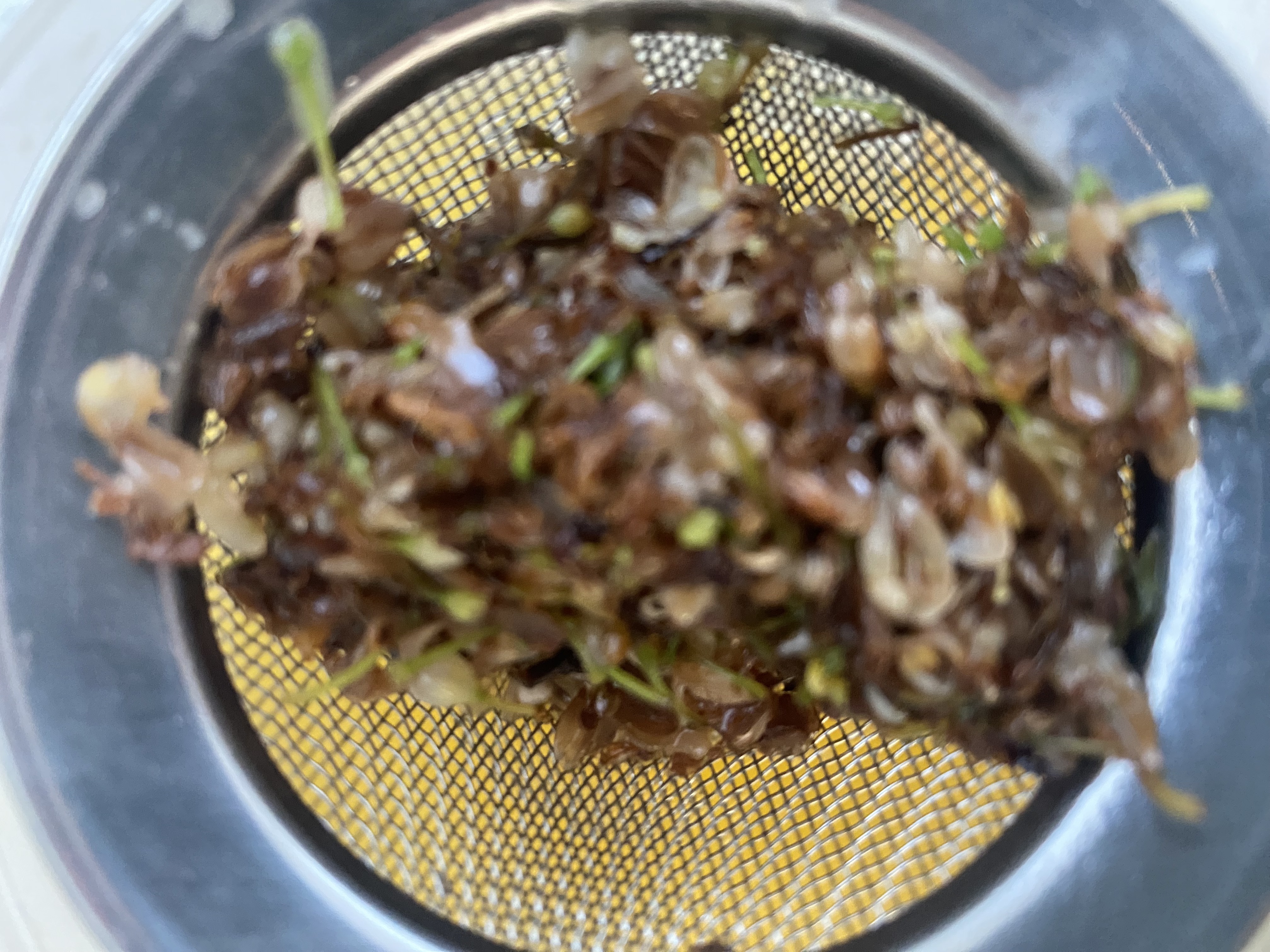
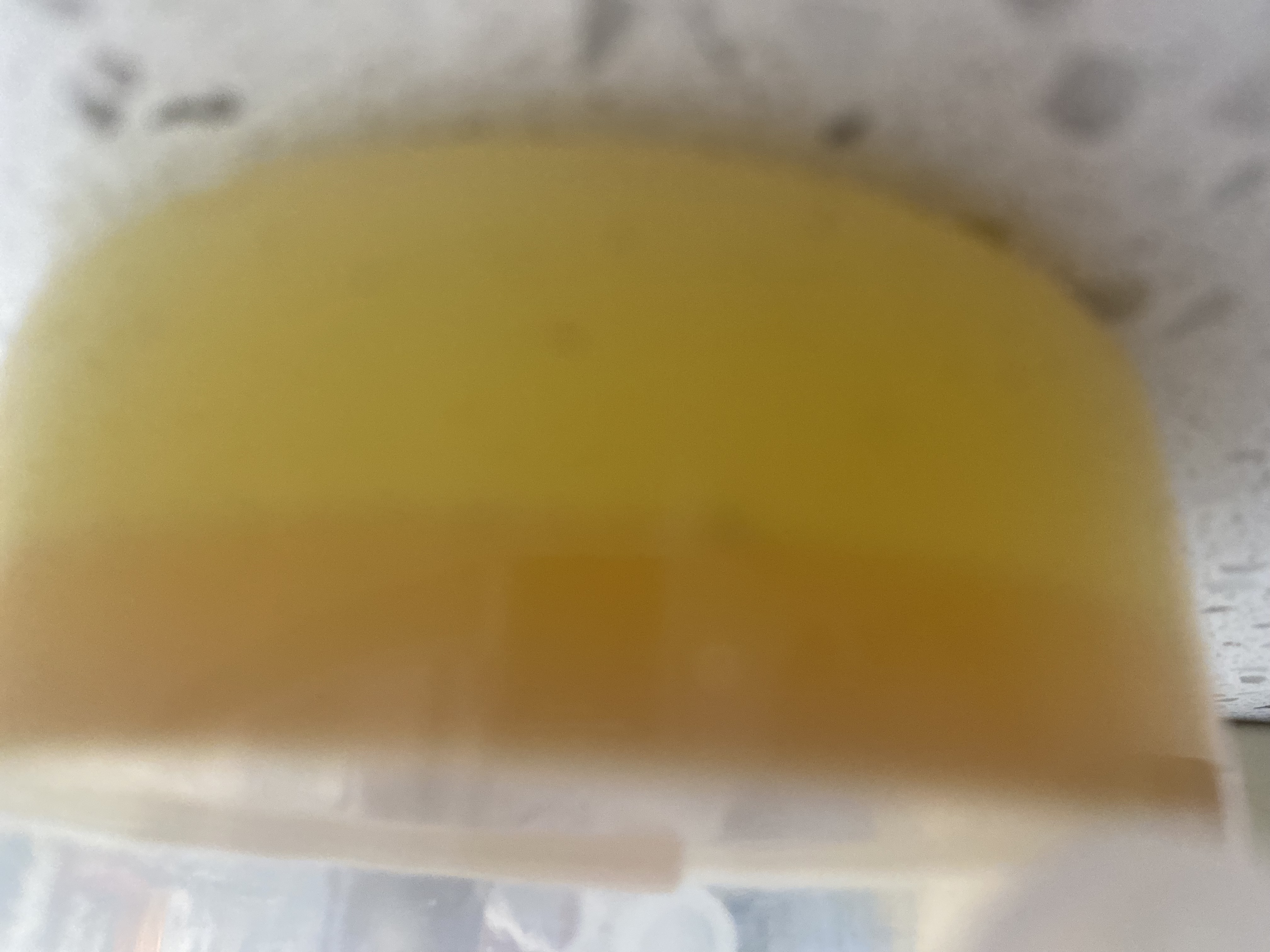
These steps are shown in the photos above- the colour change of the fat and tincture is clearly shown. What remained is the yellowish enfleurage with the darker tincture sitting on the top. This was then sealed for another two weeks and for the alcohol to slowly evaporate, further impregnating the enfluerage fat with its extracts.
At the end of the six week process is a waxy, yellow, highly arommtic product which will be incorporated into a very special parfum balm.
The effort of following the traditional process is worth it! Wendyxx
Aromatic Adventures Archives: Osmanthus Distillation 2014 Archive
| Some of the hedge |
| Upclose with the tiny white flowers |
For those who have followed my blog and aromatic musings you will know full well the heartfelt disappointment when the (expensive) Osmanthus fragrans trees I planted in the summer of 2012 failed to produce anything. It appeared that I had been sold the wrong variety of plants as they seemed misnamed. Today (Easter Monday) there had been a light shower and I was showing some visiting out of town friends the growth and plantings in my garden since they last visited more than a year ago. Low and behold I was met with the most precious site of hundreds of tiny pinhead sized white flowers and the most divine aroma wafting up in the soft breeze. My osmanthus has flowered!!! Closer inspection showed that the bush was covered in the flowers-only one bush in the hedge of 5, but it was a great sight.
| Added to organza bags to steam distill |
| Bags taped to still hanging over the boiling water |
I was able to pick approx 2/3 cup of flowers which are open or almost open. there are plenty of buds so will have more to experiment with over the next few days. They weight 31 gm and smelt distinctively osmanthus- sweet and heady. I like to listen to music while I distil so I played New Order "Ceremony' from their 1987 Album Substance. For this very first distillation I decided a steam rather than water distillation would be best, given the delicate nature of the flowers. As I only have a small copper alembic still the only way I could separate the flowers from the water and have the steam traversing through was to put into little organza bags and tape to the side of the still with duct tape. I filled the base with 1 L boiling water and sealed the unit and turned on the gas at 1228 hrs. By 1231 hrs fragrant distillate was coming out. I removed 350 ml as it was starting to smell less strong and stopped the still at 1250 hrs (total 22 mins.) after a further 10 mls. of quite weak smelling hydrosol came out. I always filter and the distillate was lovely and clear. Unfortunately all my pH meters decided to be on the blink, and I had run out of litmus papers so I can't measure the pH.
| The end product |
When I removed the little organza bags they were still very fragrant so I thought there was perhaps a bit more I could so I immersed the bags into the remaining water left in the still plus returned the last 100 mls of hydrosol to the still and continued to distil for another 10 minutes to see what happens. The aroma was slightly heavier and not as sweet but still distinctive. Next distillation in a few days I will do a water distillation...watch this space!
Now outside it is sunny and the air is filled with the sweetness of osmanthus! I found this blog which nicely describes the fragrance of osmanthus with some nice pictures (I am not associated with this blog in any way). Most osmanthus sold seems to be as an absolute (solvent extracted) rather than an essential oil.
Thanks for reading
Wendy
Posted: Sunday 4 May 2025
